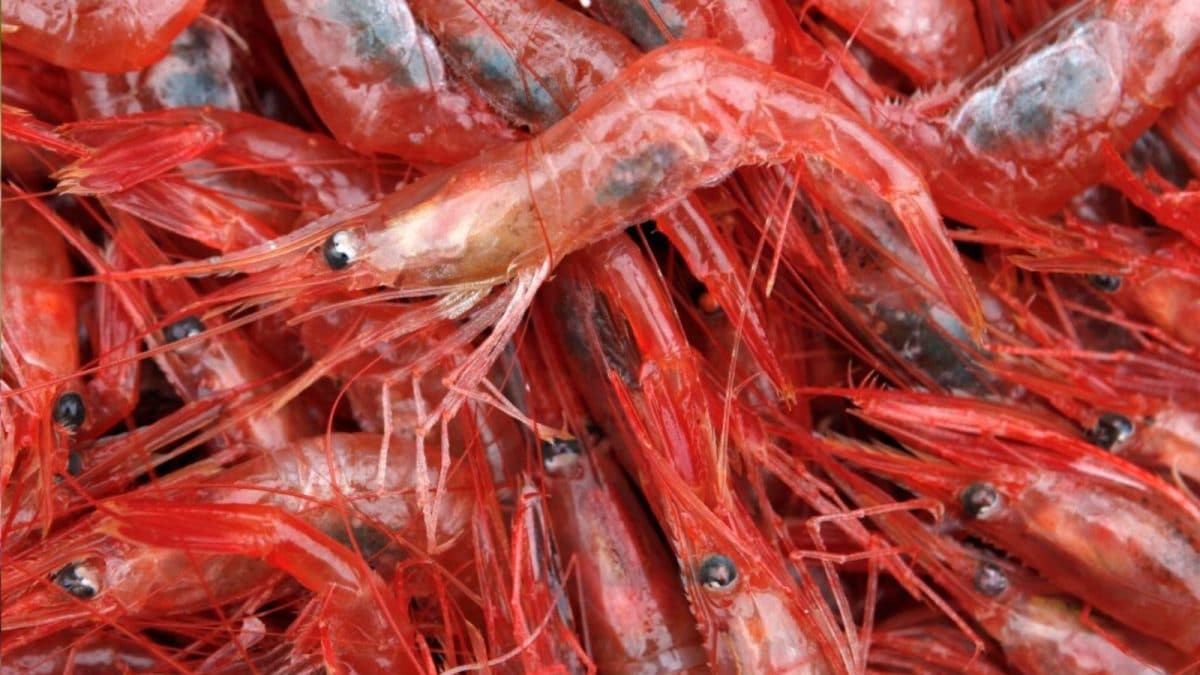Business
Centre Raises Print Media Advertisement Rates By 26% To Support Industry

New Delhi: The Central government on Monday announced a 26 percent hike in advertisement rates for print media and introduced a premium for colour advertisements, aiming to strengthen the sector amid rising costs and growing competition from digital platforms.
As per the revised structure, black-and-white advertisement rates for newspapers with a circulation of one lakh copies have been increased from Rs 47.40 to Rs 59.68 per sq. cm. The government has also accepted the committee’s recommendations on offering premium rates for colour ads and preferential placement, the Information & Broadcasting Ministry said in a statement.
The ministry noted that higher government ad rates will provide crucial revenue support to newspapers, helping them sustain operations, maintain quality journalism, and promote local news coverage at a time when input costs—particularly newsprint—have surged.
Strengthening financial stability, the statement added, will enable print media organisations to invest in better content and continue serving the public interest effectively.
The Central Bureau of Communication (CBC), the nodal agency for government publicity across media platforms, last revised print advertisement rates in January 2019 based on the recommendations of the 8th Rate Structure Committee, with the rates valid for three years.
To review the structure afresh, the 9th Rate Structure Committee, chaired by AS&FA (I&B), was set up on November 11, 2021. Between November 2021 and August 2023, the committee engaged with major associations representing small, medium and large newspapers—including the Indian Newspaper Society (INS), All India Small Newspapers Association (AISNA), and Small-Medium-Big Newspapers Society (SMBNS).
The panel examined key cost factors such as WPI inflation in newsprint, imported newsprint prices, wage costs, general inflation trends, and other production-related expenses before submitting its recommendations on September 23, 2023.
According to the government, the upward revision of advertisement rates brings print media compensation closer to market realities and acknowledges its continued relevance in a diversified media ecosystem. The move, it added, will help improve the reach and effectiveness of government communication efforts across the country.
Business
Fiscal roadmap: Finance Commission submits report for 2026-31; formula for Centre-state tax share sent to President Murmu – The Times of India

The 16th Finance Commission on Monday submitted its report for the five-year period 2026-31 to President Droupadi Murmu, marking a key step in finalising the formula that will determine how central taxes are shared with states, PTI reported.The panel, chaired by Arvind Panagariya, had been granted a one-month extension from its original October 31 deadline. “Members of the 16th Finance Commission, led by its Chairman, Dr Arvind Panagariya, called on President Droupadi Murmu and submitted the Commission’s report for 2026-31,” Rashtrapati Bhavan said in a post on X.Mandated to recommend the devolution formula and grants-in-aid beginning 2026-27, the commission travelled across all states and Union Territories before finalising its views on tax sharing, revenue augmentation and fiscal needs.
The panel includes full-time members Annie George Mathew and Manoj Panda, while SBI Group Chief Economic Advisor Soumya Kanti Ghosh and RBI Deputy Governor T. Rabi Sankar serve as part-time members.Along with tax devolution, the commission has examined the framework for financing disaster management, reviewing the funds created under the Disaster Management Act, 2005.Set up on December 31, 2023, the constitutional body succeeds the 15th Finance Commission headed by N.K. Singh, which had recommended that states receive 41% of the divisible pool between 2021-22 and 2025-26 — the same share proposed earlier by the 14th Finance Commission.According to Budget 2025-26 estimates, the Centre is expected to transfer Rs 14.22 lakh crore to states as their tax share out of a budgeted Rs 42.70 lakh crore in total tax receipts.Successive commissions have relied on weighted criteria such as population, area, income distance, demographic performance, fiscal effort and forest cover to determine state shares — an issue that has often triggered friction between the Centre and Opposition-ruled states. Southern states, in particular, have objected to population-linked weightage, arguing that it disadvantages them for achieving lower population growth.For 2021-26, the 15th Finance Commission had assigned 15% weightage to population, 15% to area, 12.5% to demographic performance, 10% to forest cover and ecology, and 2.5% to tax and fiscal effort.
Business
India’s Gold Imports Jump 200% To $14.72 Billion In October; Trade Deficit Widens

Last Updated:
India’s exports in October 2025 fall 11.8 per cent to $34.38 billion, while imports jump 16.63 per cent to $76.06 billion.
India’s gold imports in October 2025 jumped to $14.72 billion as against $4.92 billion recorded in the same month last year.
Amid the recent surge in bullion prices globally, India’s gold imports in October 2025 jumped to $14.72 billion as against $4.92 bn recorded in the same month last year, according to the official data released on Monday.
India’s exports in October 2025 fell 11.8 per cent to $34.38 billion, according to the data. Imports jumped 16.63 per cent to $76.06 billion. Imports surged due to increased shipments of gold and silver. The country’s trade deficit stood at $41.68 billion during the month.
The country’s exports to the United States declined to $6.3 bn in October as against $6.9 bn registered in the year-ago month, Commerce Secretary Rajesh Agrawal told reporters here.
During April-October this fiscal, exports increased marginally by 0.63 per cent to $254.25 billion. At the same time, imports rose 6.37 per cent to USD 451.08 billion, the commerce ministry data showed.
India-US Energy Pact
n an effort to boost India’s energy security, Union Petroleum and Natural Gas Minister Hardeep Singh Puri on Monday announced a “historic” deal to import liquefied petroleum gas (LPG) from the US. He said India has been diversifying its LPG sourcing.
According to the minister, Indian PSU oil companies have successfully concluded a one-year deal for imports of around 2.2 million tonnes per annum (MTPA) of LPG from the US Gulf Coast for the contract year 2026.
This represents nearly 10% of India’s annual LPG imports and is the first structured US LPG contract for the Indian market.
“A historic first! One of the largest and the world’s fastest-growing LPG market opens up to the United States. In our endeavour to provide secure affordable supplies of LPG to the people of India, we have been diversifying our LPG sourcing. In a significant development, Indian PSU oil companies have successfully concluded a 1-year deal for imports of around 2.2 MTPA LPG, close to 10% of our annual imports – for the contract year 2026, to be sourced from the US Gulf Coast- the first structured contract of US LPG for the Indian market,” Puri said in a post on X.
(With PTI Inputs)

Haris is Deputy News Editor (Business) at news18.com. He writes on various issues related to personal finance, markets, economy and companies. Having over a decade of experience in financial journalism, Haris h…Read More
Haris is Deputy News Editor (Business) at news18.com. He writes on various issues related to personal finance, markets, economy and companies. Having over a decade of experience in financial journalism, Haris h… Read More
November 17, 2025, 17:38 IST
Read More
Business
India Eyes Seafood Export Revival As EU, Russia, Australia Open Doors Amid US Tariff Shock

Last Updated:
Australia, which had restricted imports due to white spot virus concerns, has now permitted unpeeled shrimp from Andhra Pradesh for the first time in 8 years
The EU remains a premium market for shrimp and fish, and renewed access is expected to raise earnings for farmers and exporters. (AP Photo)
Indian seafood exporters, particularly those in Andhra Pradesh, are set for a significant boost as the government resolves longstanding trade issues with major international markets, offering relief after a sharp US tariff hit earlier this year.
In August 2025, the United States imposed nearly a 50% tariff on Indian seafood, including shrimp, effectively curbing exports from states like Andhra Pradesh, which account for nearly 80% of India’s total shrimp shipments. The tariffs, which touched as high as 59.72%, were partially in response to India’s continued imports of Russian crude oil, and posed a serious threat to the livelihoods of farmers and exporters alike.
Union Commerce and Industry Minister Piyush Goyal said that the government has proactively addressed these challenges by reopening access to alternative markets. Speaking to the Economic Times on the sidelines of the CII Partnership Summit in Visakhapatnam, Goyal noted that India had “ironed out problems with the European Union”, which had imposed a 9-year ban on Indian seafood over quality control concerns.
“Now, 102 fisheries have received approval to export to the EU,” he said, highlighting growing confidence in India’s food safety and quality assurance systems. The EU remains a premium market for shrimp and fish, and renewed access is expected to raise earnings for farmers and exporters.
Russia: Strategic Expansion
Russia has emerged as a key alternative market. Goyal stated that final approvals are underway for 25 Indian fisheries, with further approvals expected. Expanding trade with Russia not only offsets losses from the US market but also strengthens geopolitical and energy ties, reinforcing India’s diversified trade strategy.
Australia Reopens After 8 Years
Australia, which had restricted imports due to white spot virus concerns, has now permitted unpeeled shrimp from Andhra Pradesh for the first time in eight years. This move is expected to enhance India’s brand image in premium seafood markets and open avenues for processed seafood exports.
Economic Implications
With these new openings, India’s $7.4 billion seafood sector could see a 20-30% increase in exports. The government aims to raise overall exports to $12-14 billion by FY26, boosting foreign exchange earnings and reinforcing the sector’s contribution to GDP. For Andhra Pradesh, where the bulk of shrimp production is concentrated, the diversification of export markets is expected to stabilise prices and protect millions of jobs.
Geopolitical Resilience
The recent developments underline India’s ability to navigate international pressure. Faced with punitive US tariffs, the country has successfully leveraged alternate markets, strengthening trade ties with Russia, re-establishing access to Australia, and resolving longstanding EU barriers. These steps not only safeguard the domestic seafood sector but also highlight India’s strategic approach to global trade amid shifting geopolitical dynamics.
November 17, 2025, 17:25 IST
Read More
-

 Tech1 week ago
Tech1 week agoFrom waste to asset: Turning ethanol production CO₂ into jet fuel
-

 Tech2 days ago
Tech2 days agoNew carbon capture method uses water and pressure to remove CO₂ from emissions at half current costs
-

 Politics4 days ago
Politics4 days agoBritish-Pakistani honoured for transforming UK halal meat industry
-

 Sports2 days ago
Sports2 days agoTexas A&M officer scolds South Carolina wide receiver after touchdown; department speaks out
-
Sports1 week ago
College football winners and losers: The catch of the year saves Indiana
-

 Business1 week ago
Business1 week agoMore than 1,000 flights cancelled as US air traffic cuts enter second day
-

 Entertainment1 week ago
Entertainment1 week agoTom Hiddleston returns in 'The Night Manager' season 2 trailer
-

 Sports1 week ago
Sports1 week agoTexas Tech’s Toppin scores 31 in season debut






